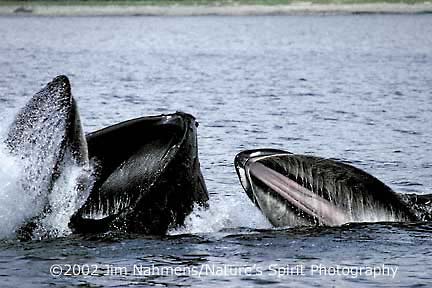Humpback Whale Songs
Biology 342 Fall 06
| Home | Phylogeny | Ontogeny | Mechanism | Adaptive Value | References | Course Home |
Ontogeny
Song Learning and the Plasticity of Vocalizations
In humpback whales, songs are composed of species-specific note types organized into themes, which which are plastic over time. In a Brazilian population, for example, a study was done to examine this song organization. In this population, there exist 24 note types organized into five distinct themes. All song cycles are composed of the same five themes, and no theme was left out of any song cycle. There was also no variation in the order that themes were sung, but there was large variation in the quantity of notes sung per song cycle. The uniformity of these whales' song cycles supports the idea that individuals of a population sing similar songs [2].
Unlike birds, individuals in a whale population do not converge on a species-typical song, but rather change their song throughout their lifetime. Eduardo Mercado observed that temporal structure/overall distribution of certain acoustic features are species specific and constant over time, but properties of individual songs are flexible and adaptable [3].
Humpback whale song changes and develops over time. These changes occur during the winter breeding season, as opposed to the non-singing summer feeding season, suggesting a correlation between singing and breeding. Individual variation of the production of complex note types suggests that there is a variable ability to compose and to learn songs. If this is true, singers that have a greater ability to compose and to learn the changes faster can sing a novel song earlier on in the breeding season, perhaps affecting sexual selection. [3]